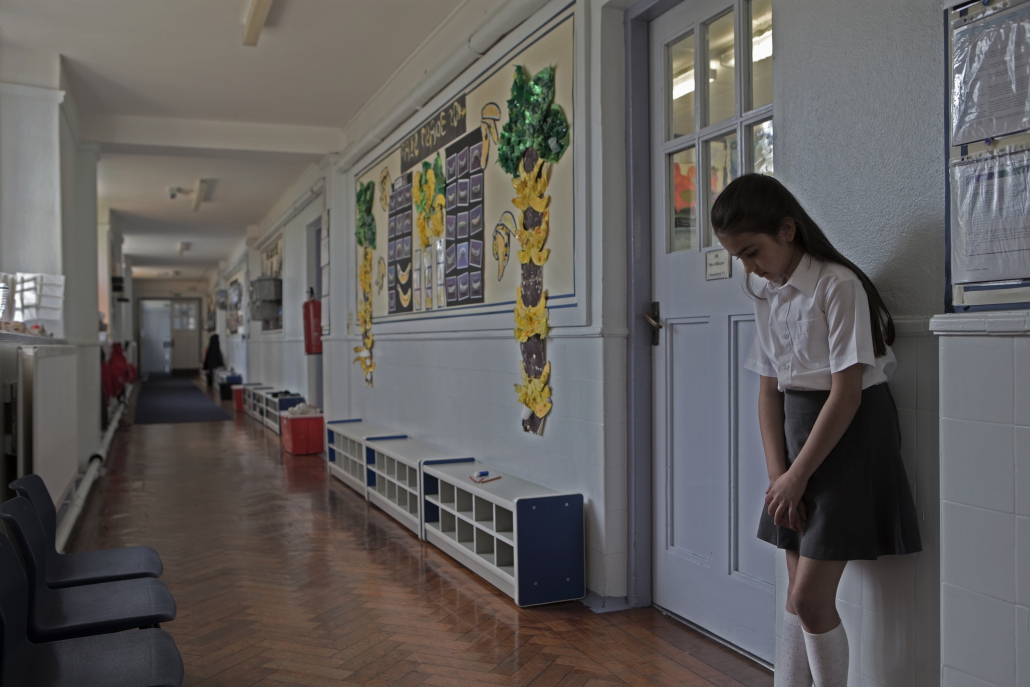Could poor communication skills be holding students back in maths?
by Alicia Lynch on Nov 25, 2020

With hundreds of pupils starting school with poor speech and language skills and even more children struggling with basic social skills, there is no wonder we are seeing the impact this has on other areas of learning. Sure, if a child has poor vocabulary this has an obvious knock-on effect on their ability to access literacy. If a child’s speech is hard to understand, this can affect the way they interact with their peers. But what about language and maths?
We don’t often think about how these two are connected yet when we break it down, many maths problems rely on a child’s ability to understand and interpret complex words and concepts. In this blog I am going to discuss some of the latest research looking at the link between language disorders, reading disorders and maths disorders. But more importantly, I am going to help break down the research and show you exactly how to put this theory into practice. Before we get into how all of these disorders co-occur it’s important to clarify what we mean by certain terms.
What is a reading disorder?
You will know children in your class with reading disorders, as this is also known as dyslexia. I am not going to tell you anything you don’t already know, but for the sake of clarification, dyslexia is a learning disorder that involves difficulty reading due to problems identifying speech sounds and learning how they relate to letters and words (decoding).

Dyslexia affects areas of the brain that process language, so there is no surprise that children with dyslexia also have language difficulties. Of course, children with dyslexia have normal intelligence and usually have normal vision. Research has demonstrated that people with dyslexia often have difficulty processing and representing the specific sounds of language. As a result, someone with dyslexia will experience difficulties in associating printed letters with relevant speech sounds, thus causing reading difficulties. Read my blog on the link between dyslexia and speech and language.
What is a maths disorder?
Also known as developmental dyscalculia, maths disorders involve a specific impairment of mathematical abilities, within the context of normal general learning abilities. Developmental dyscalculia is defined and identified according to the relationship that exists between the child’s current mathematical abilities and those that can be considered normal for his or her age.

There are actually six separate sub-types of dyscalculia which are: verbal, lexical, graphical, operational, practognostic and ideognostic. All of these subtypes (apart from graphical) rely on a child’s language skills. So there is no surprise here that children with poor language abilities also have difficulties in maths.
What is a language disorder?
Developmental language disorder (DLD) is a condition where children have problems
understanding and/or using spoken language. A child can be diagnosed with DLD if their language difficulties are likely to carry on into adulthood, if they have a significant impact on progress at school, or if they have an impact on everyday life. Scientists think that the part of the brain responsible for speech and language might be wired a little differently from that of a person with more typical language development.
The inspiration from this blog came from a research paper I recently read about the connection between different learning disorders. In this new study led by Margret Snowling at the University of Oxford, it looks at how language difficulties are a shared risk factor for both reading disorder and mathematics disorder. These two areas are rarely looked at within the same studies, but Snowling found a startling connection between the two.

What does the study tell us?
Snowling and her colleagues established that reading and maths disorders are often studied separately, but there was a need to look at the two together. In the study, they recruited 224 children aged 3 and a half. These children were considered ‘high risk’ for a specific learning disorder such as dyslexia or dyscalculia. They found that by the time the children were aged 9;
- 60% of those with reading disorders also had a maths disorder
- 70% of the children with a maths and reading disorder also had DLD.
An important finding was the high rates of both reading and maths disorders in children with spoken language problems:
- 27% of the reading disorder group also had a language disorder
- 67% of the maths disorders group also had a language disorder
- 70% of the children with a maths and reading disorder also had language disorders.
The take-home message from this study is the importance of considering levels of language disability when investigating cognitive deficits in children with either reading disorder or maths disorder. The authors concluded that assessments for both should consider the possible role of language and attentional difficulties and that interventions should take account of such problems. Also, children with pre-school language difficulties should be monitored for emergent problems in reading and maths, and programmes to strengthen these foundations should be put in place.

How do I bring theory into practice?
So we know there is a link between children with language disorders and those who have difficulties with maths. Now let’s consider this in context by looking at a typical maths problem and identifying where the language breakdown might happen.
If Jenny has ¾ of a litre of water and Sam has ⅔ of a litre, how much water do they have in total in millilitres?
1. Concepts:
To solve word problems, children have to understand linguistic concepts that determine quantity (same, equal, more, less, a third of etc). For this question, the child needs to understand what ¾, ⅔, total and millilitres mean.
2. Answering questions:
Children need to have the ability to answer questions. They need to understand they are being asked a question and then they need to decide the appropriate answer. For this question, we need to know when someone asks a “how much” question they are looking for an amount (in this case in millilitres).
3. Sequencing steps:
Understanding that things occur in a specific order is essential to solving maths problems. To solve this problem, we would need to follow a sequence of events. First, convert ¾ litre into millilitres, then do the same with ⅔ litre, then add them together.
4. Receptive language:
If a child is having difficulty answering this question, the teacher will explain how to solve it using language, which the child then has to understand and interpret.
5. Narrative skills:
Marks are usually awarded for showing working out, to explain how the child solved the problem they will need to use language. They would have to choose appropriate vocabulary, form complete sentences, and sequence those sentences in a logical way.

As the child continues through school, the vocabulary, question types and number of steps to sequence only increase in difficulty. If a child is struggling in maths it is vital that we evaluate that child’s understanding and use of language, not just their understanding of numbers and one-to-one correspondence.
What can I do to help these children?
1. Introducing the maths topic
Conceptual understanding is necessary for life, not just for maths lessons, but consider how you are teaching the meaning of different concepts.
For example, does the child understand that “pound” is both a type of currency and a unit of weight? Ensure the child is confident at understanding both the new concepts and the new vocabulary before expecting them to answer questions correctly.
2. Think about levels of questioning
Levels of questioning are at the core of teaching, Blank’s model of language use encourages the person who is asking questions of a child to simplify and restructure their language to a level at which the child can understand (Blank et al 1985).
Blank, Rose and Berlin devised a language analysis based on four levels, ranging from basic skills at level one to more complex reasoning skills at level four. The emphasis in this model is on how the adult talks to the child.
Level 1: Matching perception
Pupils at this level respond to things in their immediate environment. The teacher must use short questions and statements that only require a response to key items and events including matching, identifying and naming objects, e.g. “How many counters are here?”
Level 2: Selective analysis of perception
Level 3: Re-ordering perception
Level 4: Reasoning about perception
Consider the level of questioning for the question you just asked, was it Level 3 when the child is working at Level 2?
3. Support the child to sequence their ideas
Most children understand the concept of “first”, so start with this, what do we need to do first? Then support the child to sequence the steps needed to solve the problem, reminding them to write down as they go so they don’t forget what they did.

Difficulties with maths and reading will have a profound effect on a pupil’s ability to achieve. But when we break both of these difficulties down they can be linked back to language. Children need a good understanding of vocabulary, word structures, grammar and pragmatics in order to interpret and understand what is being taught to them. They also need a good vocabulary, and ability to use language to explain and the ability to use social communication skills in order to have discussions with teachers and peers.
There is no wonder a correlation between language disorder and maths disorder has been found in the research when we consider this information. The thing to make sure we do is learn from the research and execute change. When children present with a difficulty in maths, could a language disorder be the culprit? It is important to consider an assessment of a child’s speech, language and communication difficulties when maths disorders present themselves.
- General mental health (35)
- General Speech & Language (32)
- School Issues (26)
- Counselling (24)
- Primary Schools (24)
- Classroom Behaviour (23)
- Anxiety (22)
- Speech and Language Therapy (22)
- Absenteeism (20)
- SENCOs (20)
- Safeguarding (17)
- Secondary & Sixth Form Schools (16)
- Social Communication (16)
- Funding (14)
- MATs (14)
- Generalised anxiety (13)
- Autism Support (10)
- Language Delay/Disorder (10)
- Relationship Issues (10)
- SEMH (10)
- ADHD Support (7)
- Speech Sounds (7)
- AAC (6)
- Autism (5)
- Hearing Impairment (5)
- Depression (4)
- Selective Mutism (4)
- Anger (3)
- Cleft Lip/Palate (3)
- Downs Syndrome (2)
- Ofsted (2)
- Phobias (2)
- Stammering (2)
- Loss (1)
- Self-Harm (1)
- Suicidal Thoughts (1)
You may also like
These related stories

English as an Additional Language (EAL) or a Speech, Language and Communication Need (SLCN)?

The Forgotten Children Scandal – A Review
